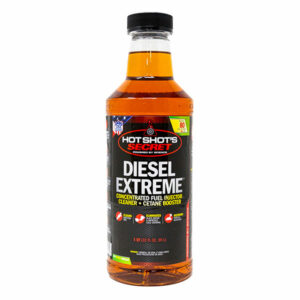What Is a P0455 Code?
Seeing the check engine light illuminate can be a cause for concern for any vehicle owner, and for good reason. While the light notifies you of a problem with your vehicle, it does not tell you what the issue is. However, you can pinpoint the issue by connecting a scan tool to the vehicle’s onboard diagnostics (OBD) system, which produces a diagnostic trouble code (DTC) that explains the problem.
A P0455 code is one of those DTCs that appears on the OBD system. It alerts you when there is a large leak in your vehicle’s evaporative emission control system or EVAP system.
What Does a P0455 Code Mean?
A P0455 code is described as an evaporative system malfunction resulting in a large leak detected. The code is triggered when a significant leak in the EVAP system prevents the system from creating enough vacuum pressure.
The EVAP system is comprised of several components, such as the fuel tank, charcoal canister, gas cap, valves and hoses. These parts work together to create a sealed environment that traps and prevents volatile fuel vapors from escaping into the atmosphere. As such, a large leak can disrupt the whole system since a vacuum cannot be created.
The engine control module (ECM) monitors the EVAP system operation and performs fuel vapor leak tests to ensure the system works properly. After observing and detecting a leak, the ECM stores the DTCs based on the size of the leaks, which is why the P0455 code appears for large leaks.
What Are the Potential Causes of P0455?
A P0455 EVAP code notifies you of a significant leak in your system but fails to explain what caused it. There are several potential causes for this issue. Finding the one affecting your vehicle is crucial for arriving at the correct diagnosis and conducting the necessary repairs.
Here are some of the reasons you’re getting a P0455 code:
- The gas cap is missing, improperly secured or left open
- Incorrect fueling or keeping the engine on while fueling
- Defective purge valve
- Deformed fuel tank filler neck
- Leaking fuel tank or fuel lines
- Faulty fuel tank pressure sensor
- Disconnected or damaged hoses
- Damaged charcoal canister
- Blocked fuel vapor hoses or tubes
Common Symptoms of a P0455 Code
A P0455 code does not cause any drastic decrease in engine performance, so the issue can easily go unnoticed. Aside from the check engine light illuminating, a P0455 code may be noticeable by a strong odor of fuel due to the vapors being released into the air. Another symptom of this EVAP code is a potential decrease in fuel efficiency.
How Serious Is a P0455 Code?
A P0455 code notifies you of a severe issue with the EVAP system. An EVAP leak can cause several problems, including decreased fuel efficiency and increased emissions polluting the surrounding environment. If the issue is left unaddressed, it can cause damage to other components and lead to extensive and costly repairs.
Can I Still Drive With a P0455 Code?
Yes, you can still drive with a P0455 code since it does not affect the performance of the vehicle. However, even though it may be safe to drive with the issue, you still have to address it as soon as possible. It’s best to have the vehicle inspected by a professional to diagnose and repair the issue causing the P0455 error.
Diagnosing a P0455 Code
A P0455 code can result from several underlying causes. As such, diagnosing this EVAP code will often require different approaches to identify the issue. However, retrieving the code with a scanner and noting the data is an essential first step that should be used as the baseline of your diagnosis.
Some diagnostic recommendations include:
- Run a drive cycle test: To ensure that you’re receiving the correct error code, reset all the codes and perform a drive cycle test drive. If the code reappears, you can start looking for the source of the leak.
- Examine the gas cap: Check the fuel cap to see if it is secured or properly closed. A loose or missing cap is a common issue that can trigger the P0455 code.
- Conduct a visual inspection: In addition to the gas cap, you’ll want to inspect other components, such as the fuel tank, filler neck, canister, hoses and valves.
- Verify valve functionality: Test the purge and vent valves to determine if they can develop and hold the proper amount of vacuum. The solenoids should also be taken into account during the test. If the vacuum drops, the valves cannot seal properly and will need to be replaced.
- Perform a smoke test: A smoke test involves several procedures in which smoke is pumped into the EVAP system at low pressures to locate the source of the leak. During the test, you must pay careful attention to all the different components of the systems and look for escaping smoke.
Difficulty of Inspecting
Inspecting an EVAP system to produce a correct diagnosis involves a range of steps and processes that require professional expertise. While a seasoned DIYer can handle a gas cap inspection and easily tighten it if that’s the issue, a qualified technician should conduct other complex processes. It can be more challenging to test valves or perform smoke tests without the appropriate experience and expertise.
A professional will be able to properly diagnose a P0455 code and recommend or perform the necessary repairs.
How to Fix a P0455 Code
The steps necessary to fix a P0455 engine code will depend on the diagnosis. Once you or a professional has pinpointed the precise cause of the problem, you can determine the best way to repair the underlying issue and resolve the code. Here are a few common solutions:
- Tightening or replacing the gas cap
- Replacing a section of the EVAP hose
- Replacing seals that may be allowing leaks
- Replacing the vapour canister
- Replacing defective valve parts
- Testing the sensor based on manufacturer instructions
Choose Hot Shot’s Secret for Proactive Engine Solutions
At Hot Shot’s Secret, our team is committed to helping you ensure your vehicle runs efficiently. We offer a range of vehicle performance solutions that are formulated to solve and prevent common automotive issues, including those that trigger DTCs. Our extensive selection of high-performance fuel and oil additives can help improve fuel efficiency while keeping you on the road and out of the shop.
Browse our product line to find suitable solutions for your specific issues and vehicle make or model. If you want to learn more about our offerings, contact our experts to get insight into the best additives for your car.



